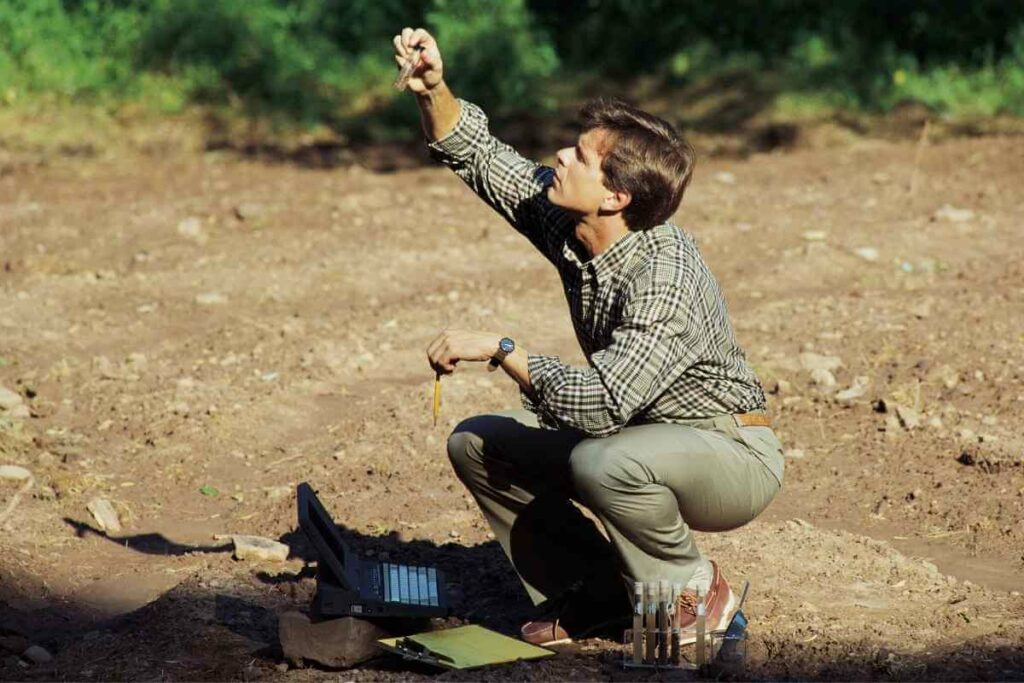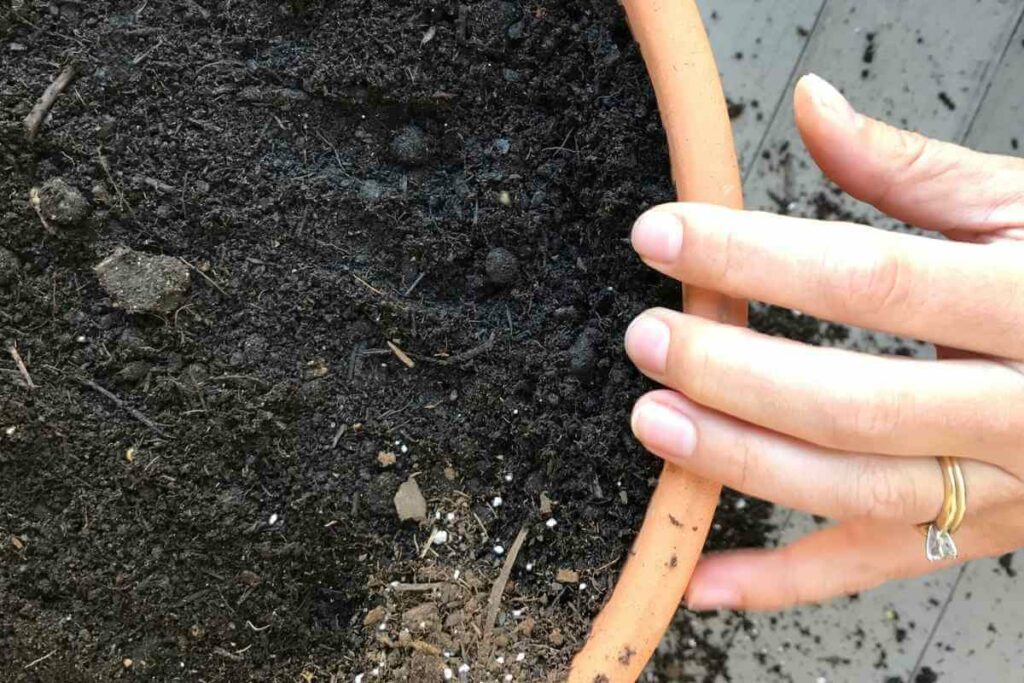Lime contains essential minerals for plant growth in your garden or lawn.
However, only use dolomitic or garden lime as it contains calcium and magnesium.
The primary purpose of liming is to lower the soil’s acidity levels.
When to Use Organic Garden Lime
Your garden or lawn soil may not always require lime; thus, you should test its pH levels as well as the correct plants to cultivate.
Most garden plants, including fruits and vegetables, flourish in soils with pH levels below 6.5 but above 5.5.
That implies that your plants will not thrive in soils with pH levels below or above this range regardless of the fertilizer type or amount used, watering, or others measures to improve the plant.
While the USDA Organic Rules forbid Certified Organic farmers to use hydrated or slaked lime, you are free to choose what to apply in your vegetable garden or lawn.
The authorities consider possible environmental impacts when designing the organic rules.
For instance, slaked lime could destroy some essential microorganisms in the soil and ruin plant roots in extreme circumstances.
Moreover, hydrated lime leaches beyond plant depths rendering it useless to the plant.
Be Careful: You should protect your eyes and skin when applying either hydrated or slaked lime; they are irritating and have adverse side effects. That explains why the Organic Rules forbid people from using slaked lime frequently in their backyard garden.
Why Soil Testing is Necessary
In some instances, it would help to alter your soil’s pH when cultivating plants with big leaves like hydrangeas which change in color based on their pH levels.

Liming improves soils with pH levels below 5.5 by increasing the pH levels and consequently improving mineral absorption for most plants.
However, if the soil’s pH is 6.5 or above, liming is not recommended because it increases its alkalinity, making it hard for plants to absorb or retain essential nutrients.
Higher soil pH stunts plant growth-inhibiting fruit formation or producing yellow leaves. Therefore, you should assess your garden’s soil pH for maximum benefits from liming.
You can test the soil pH using a pH meter, although you can get full soil analysis from an Extension Office to get essential recommendations:
- Ensure you follow the recommended guidelines when liming your garden soil and the correct nutrients to add for optimum plant growth and harvest.
- The amount of lime to add to your soil depends on the test results and recommendations.
- Acidic and magnesium deficient soils require dolomitic lime, while garden lime is applicable if the magnesium levels are within the recommended ranges.
Additionally, you can estimate or measure your garden size to establish the quantity of lime to purchase.
Manufacturers often use recommended lime quantity per a thousand square feet.
Thus, establishing the garden will ensure you purchase the exact amount your need and save you some money.
The Benefits of Lime
Lime essentially adjusts the soil pH sweetening it through higher pH levels.
Additionally, liming is an effective and cheap way of boosting your soil’s magnesium and calcium levels and consequently enhancing the plants’ nutrient absorption.
Lime also improves sandy and clay soil structures improving their productivity.
It is essential to evenly distribute lime across the garden or lawn and integrate it into the soil because it is not mobile once dissolved.
From Experience: While several vegetables thrive in acidic soils, this differs based on location and the plant type. That emphasizes the need to test your soil before liming and planting to ensure your application process is accurate.
The Best Liming Time
The ideal liming time is in the fall for maximum benefits. Altering soil pH takes time, and thus liming in fall allows the soil to transform gradually during winter before the planting season. Additionally, the thawing or freezing cycles improve the lime-soil mixing process.
Till your garden or lawn up to six inches deep before adding lime in the soil.

When liming an established lawn or vegetable garden, utilize a fertilizer spreader or lime pellets.
It would be best to water the soil afterward to make the lime dissolve faster in the soil.
Additional Notable Aspects of Liming
Not every lime is suitable for gardening, but you can consider dolomite and garden for such purposes.
However, avoid using quick and slaked lime on your garden or lawn.
Notably, garden and dolomite lime provide calcium and magnesium for your garden replenishing your soil.
Always test your soil before using lime. You can either use a soil PH tester or take a soil sample to a nearby agricultural testing center.

Most importantly, ensure you understand the results and subsequent cautions and recommendations before proceeding with any process.
You should always remember that when working with lime, you are dealing with chemicals.
Therefore, it would be detrimental to take a casual approach and assume they cannot harm anything in your garden due to their natural constituents.
Always be cautious to prevent damaging your lawn or garden and aim for better results all the time.
If your soil has high pH levels, plants can develop some problems like chlorosis. Notably, plants develop chlorosis to iron deficiency when the garden or lawn soil’s pH levels exceed 7.0. Additionally, plants may fail to absorb iron in soils with high pH levels, although the soil may contain the mineral.
Lime is not a quick fix for unhealthy soil.
Therefore, you should lime your garden or lawn at the right time (fall and not in spring) and use the appropriate amounts for optimum results.
Most landscape and garden plants flourish in soils with pH levels below 6.5, although others require acidic soils for growth.

Conversely, other plants require soils with higher pH levels for better yields.
Conditions like chlorosis inhibit plant growth by hindering carbohydrate synthesis; always ensure your soil has balanced mineral contents.
Final Thoughts
Liming is an essential process to improve your garden’s productivity or lawn’s landscape.
However, you should assess the soil’s pH levels before liming in the fall for better results.
Overall, liming’s primary purpose is altering soil pH, which enhances mineral absorption; most plants flourish in alkaline soils, but few require acidic environments to thrive.


